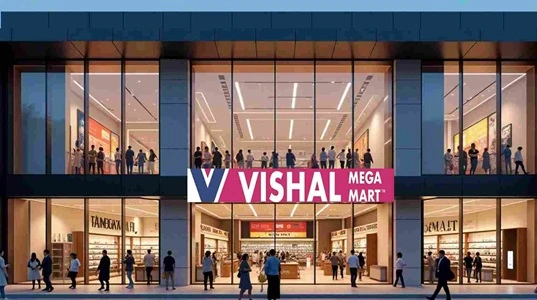Retail Business model is one of the oldest and most popular business models around the globe, known for being the most effective sales point. From traditional shops in local markets to massive online stores, retail bridges the gap between manufacturers and customers. Retail stores play an important role in connecting products with the consumer, offering convenience, accessibility, and variety.
Every customer goes to retail stores when it comes to buying consumer goods. There are several advantages that the retail business model offers. To understand how a retail business model works, it will be better to learn about the true definition while exploring some popular examples. Let’s get started:
Retail Business Model: Definition

A retail business model is a common business strategy where a company, store, or outlet (both online and offline) sells directly to customers for their personal use. Retailers act as an intermediary between producers, wholesalers, or businesses and consumers. In the retail business model, wholesalers or manufacturers contact retail shops or outlets and convince them to buy their product in bulk. In exchange, the retailer earns a margin based on the product type. A high-demand product usually has a lower margin, but excessive sales of the product help retailers make a good profit. There are many features of retail business models. Below are some of the popular ones:
- Selling directly to end-users.
- Purchasing goods in bulk and selling in smaller quantities.
- Providing convenience and customer service.
- Operating through physical stores, online platforms, or a mix of both (omnichannel retail).
In short, the retail model revolves around making products easily available to customers at the right place, right time, and at competitive prices.
Types of Retail Business Models
Retail business models operate on simple fundamentals; however, there are many forms of retail businesses that you can notice everywhere:
- Brick-and-Mortar Retail – Traditional physical shops like supermarkets, clothing stores, or pharmacies.
- E-commerce Retail – Online retailers such as Flipkart, Amazon, or Myntra.
- Omnichannel Retail – A combination of physical and online stores, offering customers a seamless shopping experience.
- Franchise Retail – Businesses like McDonald’s or Domino’s that follow a franchise model.
- Direct-to-Consumer (D2C) Retail – Brands that sell directly to customers without middlemen, often through online platforms.
Along with these popular business models in the retail category, there are many more that use the retail model with a combination of different strategies to enhance sales.
Examples of Retail Business Models
Despite being the most popular choice among buyers, it might be confusing for some people to understand the business model without learning about some top names as examples. Below are some common retail business outlets:
- Grocery Store, Corner Store, or Convenience Store: You can find grocery stores, corner stores, or convenience stores on every street in India. These retail stores are usually called Kiryana Shop in the local language.
- Amazon – Amazon is an e-commerce platform where third-party sellers list their products. Amazon is a global leader in e-commerce, offering millions of products across categories with home delivery. Wholesalers or suppliers sell their product on Amazon; meanwhile, Amazon earns from the commission on every product sold.
- Walmart – A classic example of a brick-and-mortar retailer combined with online services.
- Reliance Retail (India) – A large retail chain that includes supermarkets, electronics, and fashion stores.
- Zara – A fashion retailer known for its fast fashion model and global retail presence. In stores like Zara, HnM, and Adidas, consumers look for the product they like and purchase from the outlet. These stores are the sales points using the retail business model.
- D-Mart – A popular Indian retail chain that focuses on groceries and household items.
These examples show the wide variety of approaches businesses take to reach customers under the retail model.
Advantages of Retail Business Model
As mentioned earlier, the Retail Business model is the oldest method used around the globe to bridge the gap between wholesaler and consumer. There are many advantages to this business strategy. Let’s take a quick look at a few popular advantages:
1. Direct Customer Access
Retailers have the primary advantage of interacting directly with the customer, which helps in understanding demand, preferences, buying behaviors, and how trends are changing in the market for certain products.
2. Wide Reach and Convenience
Retail outlets make products easily available to customers, while online retail platforms provide convenience and doorstep delivery. With the addition of quick-commerce platforms, the retail business model is also evolving recently.
3. Opportunities for Growth
With higher growth potential in the retail business model, many businesses have also started working with retailers instead of following the B2C model. Businesses can expand by opening new stores, launching online platforms, or diversifying product ranges.
4. Customer Experience and Loyalty
The primary reason behind the success of the retail business model is enhanced customer experience. Most customers don’t want to deal with brands directly; thus, a retailer seems helpful at this point. Customer experience and loyalty help in the success of a product.
5. Variety and Choice
Retail stores often stock products from different brands, different categories, and a lot more. From daily essentials to groceries, this huge variety and choice ensure a better experience for customers. At the same time, this same strategy helps businesses boost sales.
Disadvantages of the Retail Business Model
In the old times, the retail business model worked like a charm when there were a few sellers out there. With the increasing demand and benefits, most people started opening their retail stores. Due to such reasons, you can find a couple of disadvantages of this business model:
1. High Competition
Retail is one of the most competitive industries. With both local shops and global online platforms fighting for customer attention, survival can be challenging.
2. Thin Profit Margins
Since retailers usually compete on price, they often operate with low margins. This makes it difficult for small businesses to scale and stay profitable.
3. High Operational Costs
Running retail stores requires investment in rent, staff, inventory, logistics, and marketing. For online retail, delivery and return management can also be expensive.
4. Changing Consumer Preferences
Customer demands and preferences change quickly, especially in fashion, electronics, and lifestyle products. Retailers must adapt fast to avoid losses.
5. Inventory Risks
Overstocking or understocking can both harm retailers. Poor inventory management leads to unsold goods or missed sales opportunities.
Conclusion
The retail business model is important to the world, and it is widely used everywhere. A country’s economy is dependent on a retail business model because it connects producers with consumers, provides value, and covers the gap.



